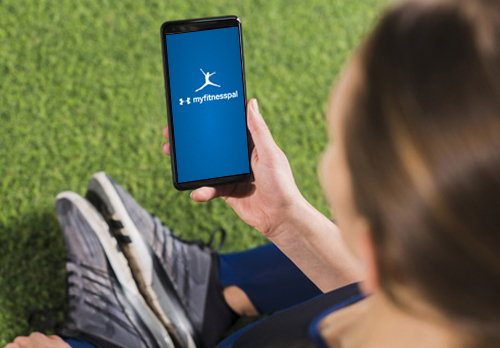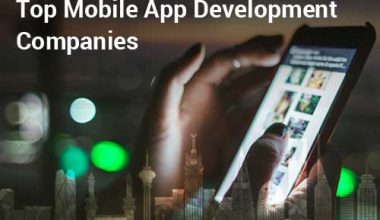Are you a venture capitalist or a tech company intending to invest in application development and would like to know how much it costs to make a fitness app? This article goes into great detail on the fitness app market’s profitability.
Establish a budget by finding out how much it will cost to produce a fitness app and other associated expenses. Then, get prepared to unveil the fitness app sector’s next big thing.
How Much Does It Cost To Build A Fitness App – Overview
Did you know that in 2022 Paired, a health and fitness app, earned $2.3 million on the Google Play Store? Health and fitness applications are transforming how people track their health and maintain an active lifestyle. Nowadays, many people use fitness applications in their daily lives.
Since fitness apps promote healthy lifestyles by tracking dietary intake, exercise regimens and training plans, every smartphone owner in the 68.7 million-strong United States utilise at least one fitness app.
As a result, both the number of users and downloads of fitness apps have substantially increased. By 2030, the market for fitness apps, which is expected to grow in popularity, will be worth USD 30.63 billion. Based just on market valuation, there is without a doubt a lot of money in this industry.
Fitness app investing is a lucrative industry, according to venture capitalists and IT companies. So, if you’re a business or investor looking to invest in Paired or similar software, now is the time to study the market.
Let’s explore the requirements for developing a fitness app, including the costs, functionality, maintenance, and support requirements.

Cost of Building a Fitness App
Unfortunately, there isn’t a single right answer. Fitness app development costs vary depending on a variety of variables, such as the complexity of the design, the location of the development team, UX/UI design, quality assurance, and more.
There are various kinds of fitness apps. Developers integrate pertinent features based on the type you select, which also affects how much it costs to produce. Costs increase as features increase.
However, before spending further money on the idea, it is usual to develop an MVP of the software and solicit customer feedback. A programme that meets the needs of the user only has the features that are absolutely necessary.
After releasing an MVP, you can gradually add more complex features and attract more customers.
So how can you figure out the cost of developing a fitness app?
Start by calculating the time required for each stage of development, including project management, back-end, UX/UI design, iOS or Android programming, and so on. Then multiply the amount of time by the development team’s hourly fee.
The following is a breakdown of the costs and hours needed to create a fitness application. To more accurately determine the cost, we must be aware of all the project requirements.
| Work Type | Backend Development | iOS Development | Android Development | |||
| Features | 269 hrs | 438 hrs | 438 hrs | |||
| Frameworks & Libraries Integration | 35 hrs | 36 hrs | 36 hrs | |||
| UX/UI Designing | N/A | 120 hrs | 120 hrs | |||
| Quality Assurance | 217 hrs | 343 hrs | 343 hrs | |||
| DevOps | 36 hrs | 62 hrs | 62 hrs | |||
| Project Management | 124 hrs | 218 hrs | 218 hrs | |||
| Total Duration | 681 hrs | 1217 hrs | 1217 hrs |
Additional Costs associated with developing a Fitness App
The features you include will determine how much it costs to design a fitness app. There are distinct sets of functionality for different kinds of apps. Let’s check out a few key types.
What Kind of Features will Your Fitness App have?
To give you a hint, here are some basic features any fitness app needs to have:
- Registration and Login: Adding different login options makes it easy and quick for users to sign in. You can integrate simple options like signing up via Google or Facebook to get more users to register.
- User Profiles: Users can customize their accounts by entering information such as their height, weight, and fitness objectives. Users can post pictures to their profiles and change their passwords.
- Workout: Your app needs to include a menu of exercises that users may select from. The exercises could include yoga, warm-up exercises, cross-training, and more. You can also include a list of exercises, tips for watching videos while working out, the length of the programmes, and the number of calories burned.
- Nutrition: Meal plans should be available in fitness apps. Users can manage a healthy diet as a result. Users also require the ability to enter data like carbohydrates, proteins, and fats and add their own meals.
Marketing
Your app is getting set to launch after spending countless hours and resources on its development. There are a few practical and easy strategies to promote your software and get it seen.
A promotional campaign should ideally be started during the development phase. However, many marketing strategies will still be effective even if your application is already out.
Here are some of the key marketing strategies:
- Social media – Social networking is the perfect tool for getting the word out about your application.
- Influencer marketing – Using influencer marketing, speciality markets and a larger user base may be targeted.
- Content marketing – Curate helpful information for content marketing that explains the features and potential uses of your software. Create it, then publish it on several websites.
- Blog – A blog is a further resource for promoting your app with fitness-related material. Owning a blog allows you to attract readers via search engines. However, attracting people to your blog takes a long time.
- Ads- Ads, make it easy to locate consumers through advertising. Setting a budget is required for this.
- Online videos – Create films that describe what your programme performs and upload them to the internet, preferably to YouTube.
- Getting listed – getting your app listed on the Play Store or App Store is certainly half the battle won.
- Collaborate with a fitness blog- Work with a fitness blog to spread the word about your app. Look for reputable blogs in your niche and work with them. Certainly, people pay attention to reliable sources.
How Much Money Do You Need to Spend on Marketing?
There are many more ways to advertise the software, including trade exhibitions, PR, web marketing, etc. Through press releases or newsletters, promotional services can push your app and make it more visible to users.
You can make use of social media and other free methods to promote the software. However, you almost always need to set aside money for app marketing. Running advertisements on Google, YouTube, and Facebook are some methods of financial advertising.
Take your app to some trade exhibitions as an alternative. Think large picture when promoting your app at trade events. Develop a marketing campaign to hammer it home and attend some significant trade fairs.
Maintenance & Support
Your development team will be in charge of repairing any bugs that appear after your fitness software is put into use. The team can even give you a way to respond to consumer questions or support requests over the phone, through email, on social media, or in person.
Miscellaneous Costs
The cost of creating a medical app is intricate. App developers can make money in a number of ways. Other minor costs associated with creating and launching a fitness app include accounting and legal fees, software licences, hosting costs, and fees for payment processing. If you don’t budget for these costs, they may add up very rapidly.



